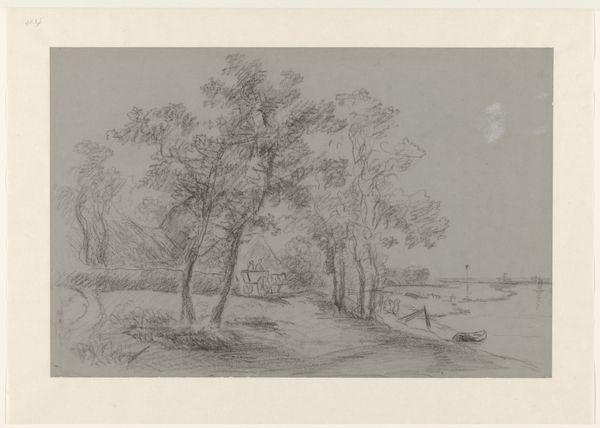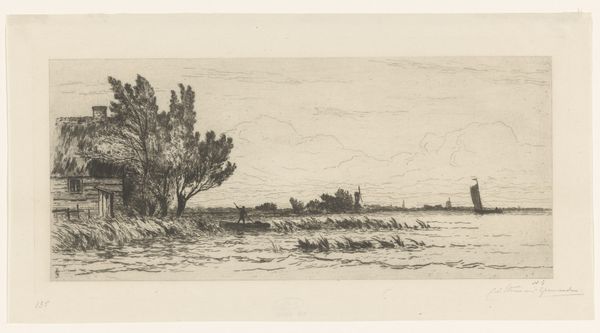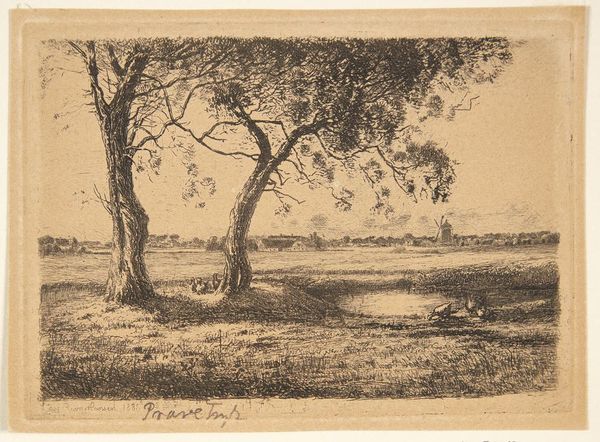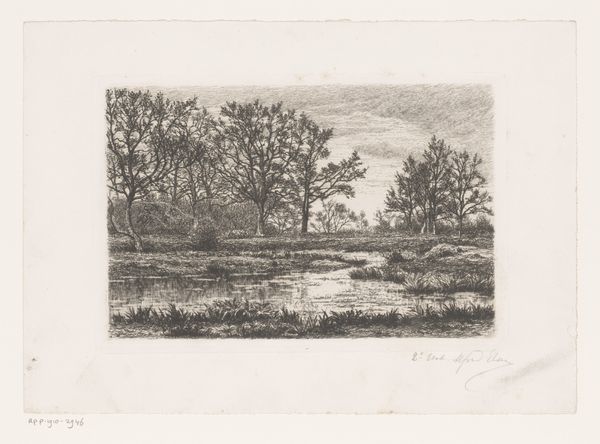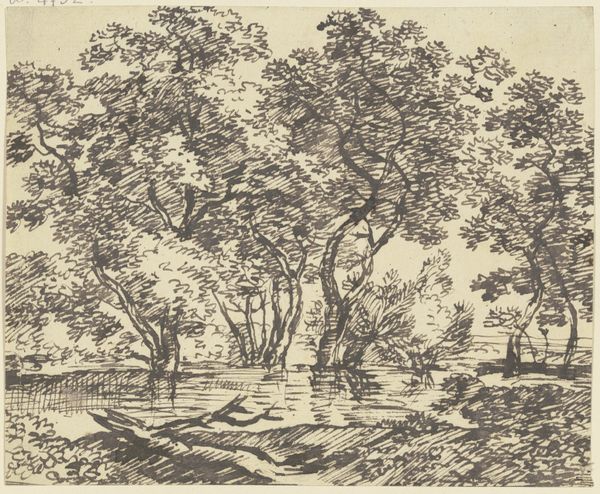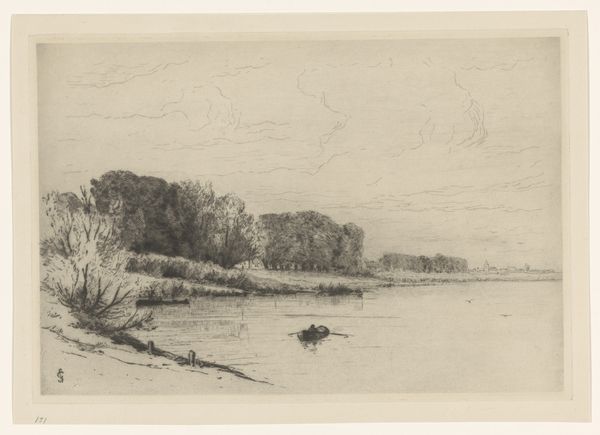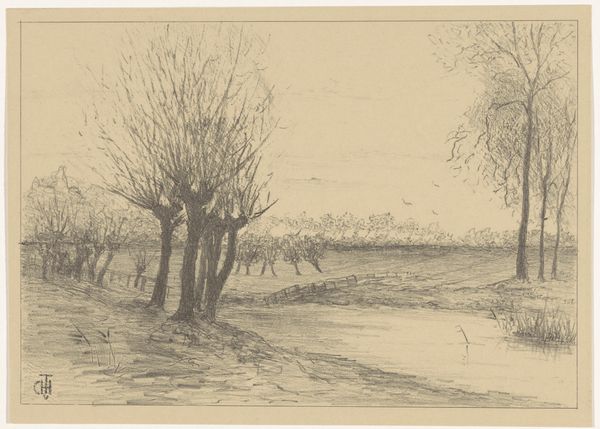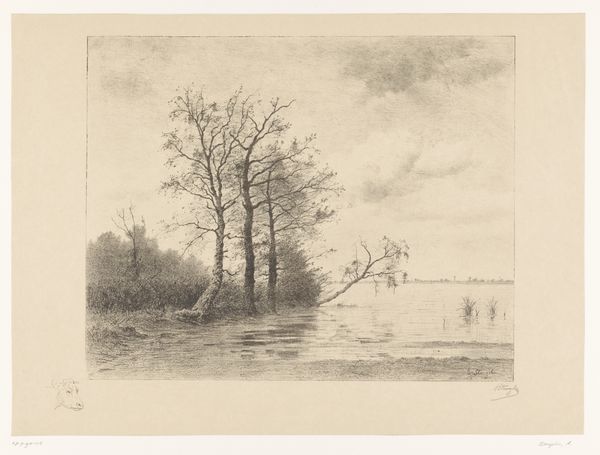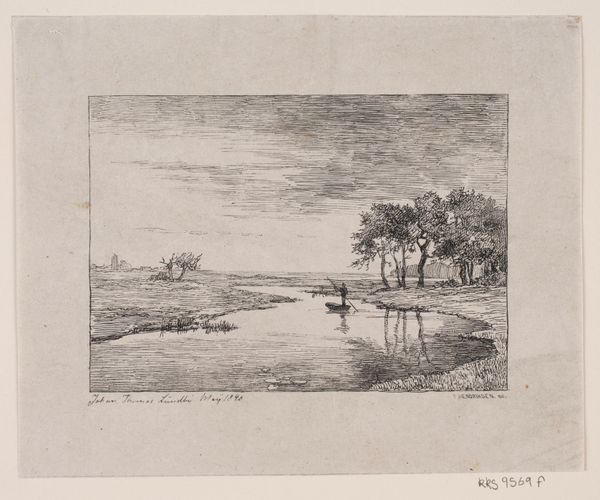
Dimensions: height 217 mm, width 307 mm
Copyright: Rijks Museum: Open Domain
Editor: Here we have Anton L. Koster's "Farmhouse with Meadows," an etching from 1893. There's a beautiful, tranquil mood about it, even with the stark lines. What social or political contexts might have shaped this image? Curator: Well, consider the late 19th century. Industrialization was rapidly transforming Dutch society, drawing people away from rural areas. Images like this, depicting an idyllic countryside, catered to a yearning for a perceived simpler past. Notice the lone figure – perhaps symbolizing a disappearing way of life? What do you make of the emptiness of the fields? Editor: It could be highlighting that loss, the abandonment of rural spaces. Was there a particular audience that would be interested in this artwork? Curator: Absolutely. This kind of print would have appealed to a burgeoning middle class seeking a connection to a romanticized version of Dutch identity. It’s affordable art, widely distributed through printmaking techniques, reinforcing notions of national heritage tied to the land. Think about the role of art in solidifying these cultural narratives. Does this image confirm any ideas about the relationship between city and rural life in that era? Editor: It reinforces the image of the peaceful countryside as a respite from the industrialized city. Perhaps even idealizing it. It’s made me consider how artists can be both observers and shapers of cultural perceptions. Curator: Precisely. We can also consider the influence of artistic movements, like realism and Romanticism, as influencing Koster’s visual choices and its reception by its audience. It is fascinating how an apparently simple image speaks volumes about its era when understood through historical context. Editor: That's incredibly helpful to consider. I definitely appreciate the artwork a little more. Thanks.
Comments
No comments
Be the first to comment and join the conversation on the ultimate creative platform.
